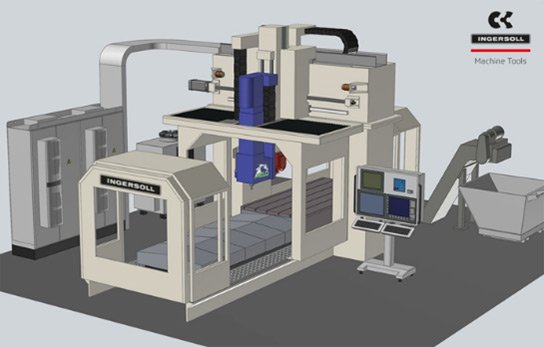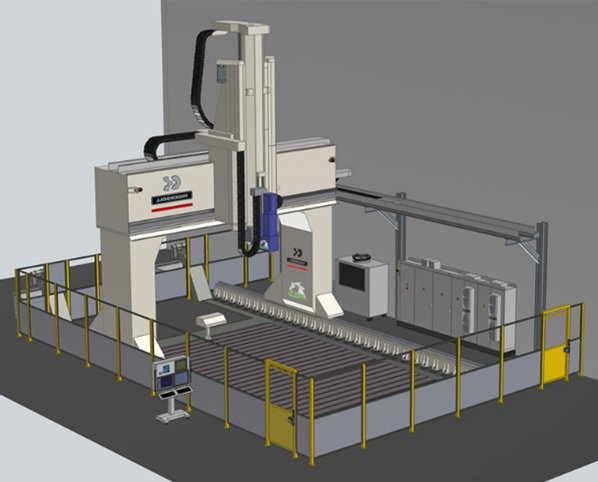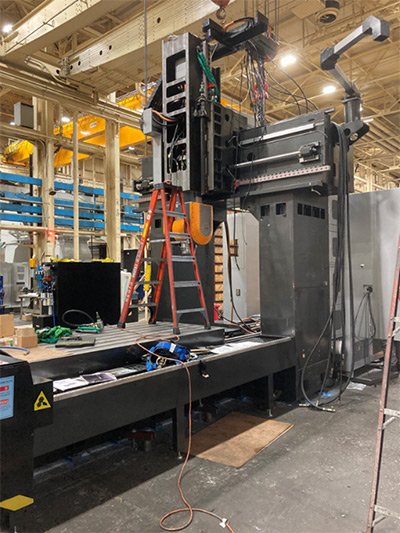Norbert J. Kott, US Army DEVCOM-GVSC Materials, Additive Manufacturing (Detroit Arsenal, Warren, MI) reports in an article that appeared on the SME’s website that they US Army is working with LFAM 3D printer manufacturers Ingersoll (part of the Camozzi Group) and Virginia-based MELD Manufacturing on the Jointless Hull project. Goal of the project is the development of a metal 3D printer that is capable of producing parts as large as an entire vehicle.
The goal of the Jointless Hull project is to fabricate hulls of vehicles that required fewer welded joints during manufacturing, directly increasing the durability of the hull against underbody attacks. Psast attempts using forging, forming, and welding proved that these legacy manufacturing processes are not well matched for vehicle program needs. Additive manufacturing (AM) technologies, on the other hand, present new opportunities in material processing and flexible fabrication that provide a compelling avenue for producing new vehicle hull concepts.

Some of the largest such systems include the EBAM machines from Sciaky and large-size DED systems from the likes of DMG Mori and Trumpf. These systems can produce large parts yet costs remain high because they are based on metal powder feedstock. Printing large parts requires a large amount of material and handling of the feedstock for the process is another major consideration. While powder-fed (or blown powder) directed energy deposition systems have demonstrated the ability to scale to some larger sizes, technologies based on powder beds have not. The development of these technologies for larger-scale systems is ongoing, however, the inherent challenges related to handling and processing metal powders will remain and will be magnified as systems scale to larger sizes. Other large area additive manufacturing (AM) systems (up to 7 meters in length) have been demonstrated in recent years, most prominently for processing polymeric and fiber-reinforced materials and therefore limited mainly to tooling applications.
“Scaling the available technology and machine capabilities to larger platforms to enable a versatile capability to access a broad range of large-scale applications, especially in metal, is needed,” Kott concludes.
ASTRO America, ALMII, and the US Army DEVCOM-GVSC are working together on the Jointless Hull project as a sponsored program to develop a large-scale metal AM system for the US Army’s Rock Island Arsenal in order to make large-scale metallic parts more common in Army ground vehicles. The program’s vision is to combine large format machine tools that have been historically proven in various industries with additive manufacturing technologies to reduce production lead times. The resulting capability will enable metal additive manufacturing on a previously unseen or unavailable scale, not only for ground vehicle systems but for all large-scale applications. The ability to print such large metal parts will open up new applications and expand the uses of additive manufacturing processes.
The Jointless Hull project will create and deliver two distinct machines. The first machine will be capable of printing and machining parts up to 1 x 1 x 1 m in size. This machine will be used for process development, print strategies, and print path planning for parts up to the size limit of the machine, as well as parts that will be built on the second larger machine. The second larger machine will be able to print and machine parts within its 10 x 6.5 x 4 m build volume (length x width x height). This will be the largest metal AM system publicly available.
The large size system’s base architecture will be provided by Ingersoll Machine Tools (part of the Camozzi Group), the company that has developed the largest composite AM systems currently on the market. Ingersoll uses Siemens components and software to run its giant gantry systems, which can produce parts as long as 7 meters. The Siemens team, also selected to participate in this program, focuses on multi-axis, CNC-based applications and process simulations.
Manufacturing on Demand
MELD Manufacturing Corp, the developer of the MELD process (also referred to as additive friction stir deposition), is producing and delivering the deposition systems that will enable the additive component of these large metal AM machines. Their patented processing technology utilizes wrought feedstock material in a solid-state process that relies on severe plastic deformation to deposit the material at the point of deposition.
For the Jointless Hull project, all commercially available metal additive technologies were considered. The large-scale machine is configured as a traversing gantry machine with the metal printing and machining tool directly mounted on one axis (Z-direction). This configuration is suitable for handling large, (heavy) metallic components and allows for flexible manipulation of manufacturing methods.
The unique friction stir-based additive process developed by MELD Manufacturing was chosen as the most promising to meet the size and material requirements of our large-scale system. The method employs a hollow, rotating shoulder through which material is fed and deposited onto a substrate. Lower temperature AM methods were considered in order to reduce the stress and build-up created during the process.
The MELD process is a solid-state additive manufacturing (AM) technology for depositing and processing material at temperatures below its melting point. Because MELD fabricated parts are fully dense, no secondary processing is required to remove volumetric defects such as voids or porosity. The system does not require a specialized chamber because the material is printed at temperatures below melting. Undeveloped next-generation materials could provide even better performance.
The ultimate goal of the Jointless Hull project is to develop a system that can rapidly fabricate large metallic structures for a wide range of applications that require metallic material properties.
The American Lightweight Materials Manufacturing Innovation Institute (ALMII), Detroit, MI, contributed to this project.
* This article is reprinted from 3D Printing Media Network. If you are involved in infringement, please contact us to delete it.
Author: Davide Sher




Leave A Comment